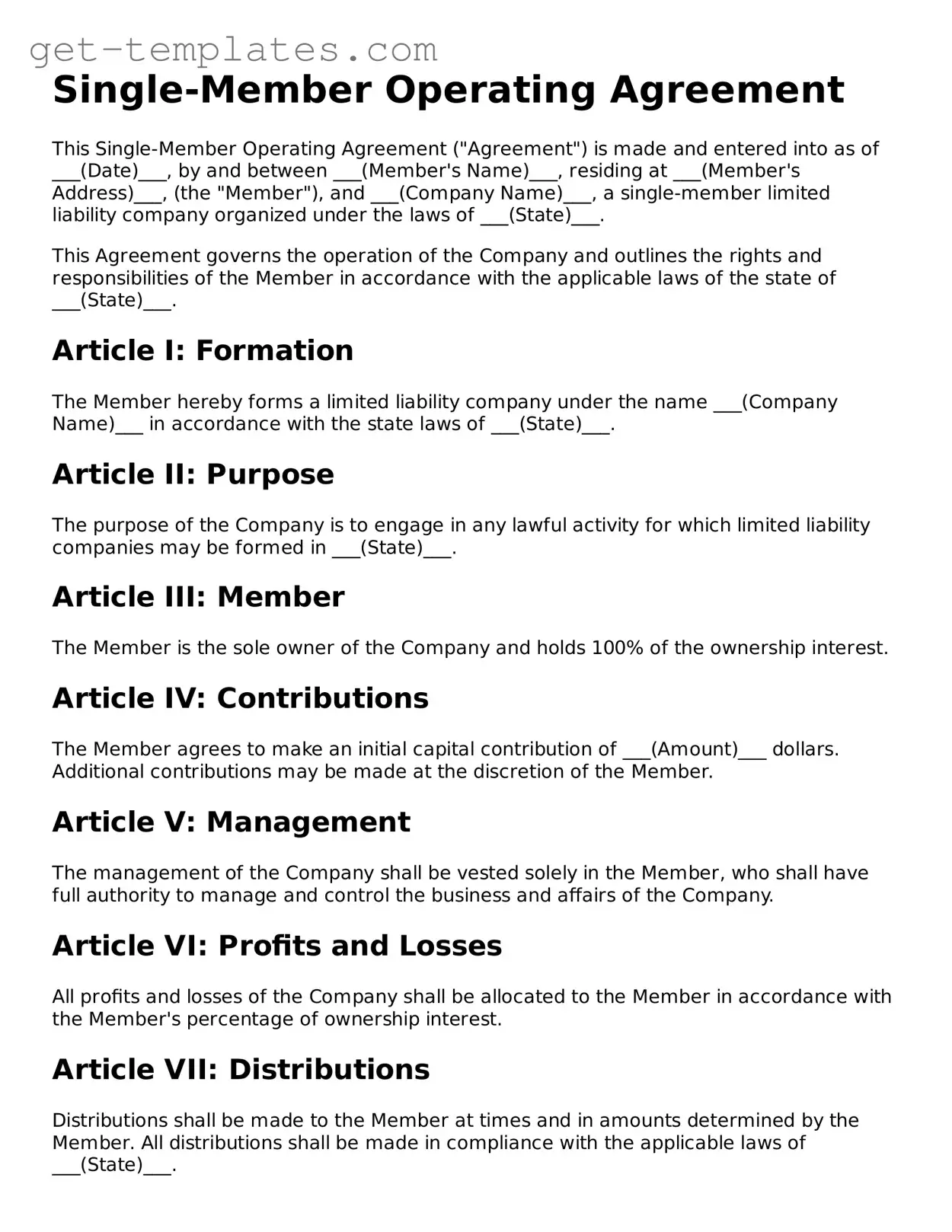Single-Member Operating Agreement
This Single-Member Operating Agreement ("Agreement") is made and entered into as of ___(Date)___, by and between ___(Member's Name)___, residing at ___(Member's Address)___, (the "Member"), and ___(Company Name)___, a single-member limited liability company organized under the laws of ___(State)___.
This Agreement governs the operation of the Company and outlines the rights and responsibilities of the Member in accordance with the applicable laws of the state of ___(State)___.
Article I: Formation
The Member hereby forms a limited liability company under the name ___(Company Name)___ in accordance with the state laws of ___(State)___.
Article II: Purpose
The purpose of the Company is to engage in any lawful activity for which limited liability companies may be formed in ___(State)___.
Article III: Member
The Member is the sole owner of the Company and holds 100% of the ownership interest.
Article IV: Contributions
The Member agrees to make an initial capital contribution of ___(Amount)___ dollars. Additional contributions may be made at the discretion of the Member.
Article V: Management
The management of the Company shall be vested solely in the Member, who shall have full authority to manage and control the business and affairs of the Company.
Article VI: Profits and Losses
All profits and losses of the Company shall be allocated to the Member in accordance with the Member's percentage of ownership interest.
Article VII: Distributions
Distributions shall be made to the Member at times and in amounts determined by the Member. All distributions shall be made in compliance with the applicable laws of ___(State)___.
Article VIII: Indemnification
The Company shall indemnify the Member to the fullest extent permitted by law against any and all expenses and liabilities incurred in connection with the Company.
Article IX: Amendments
This Agreement may be amended only by a written instrument signed by the Member.
Article X: Governing Law
This Agreement shall be governed by and construed in accordance with the laws of the state of ___(State)___.
IN WITNESS WHEREOF, the Member has executed this Single-Member Operating Agreement as of the date first above written.
_____________________________
___(Member's Name)___, Member
